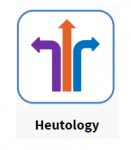In life, there are individuals, who in spite of apparent academic challenge and disengagement from the schooling process (frequently labelled failures), grow to be successful entrepreneurs, artists, inventors, revered for their ability to create a product of exquisite beauty, idea of genius or expression of talent, held in high esteem by all those in awed observance.
Sir Ken Robinson in his books and talks, devoted to identifying and finding your "element" , addresses the circumstances of many very successful, gifted individuals who manage to discover, stumble on or passionately pursue a talent or interest that becomes acknowledged as their expertise. In a process of self-discovery and reflection they focus on “self-determined” projects, sometimes setting goals and organically accumulating and applying information for progress.
Frequently, these savants have been identified and mentored by a sage (facilitator) who has recognised their ability and provided an environment in which passion, talent and circumstance have converged to enable an expression of brilliance.
More often, than not, the prodigy is "self-taught", they have created or innovated in their field of interest, discovered a new way to address an old problem or played with elements to make a new combination, usually via trial and error, practised to perfection and considered their signature creation.
How do any of these experts, creators, innovators prove what they know?
Evidence: observable products chosen, by the individual, as the best way to express their knowledge, understanding or skills.
They created their own curriculum, took responsibility for their own learning and travelled their own path. There was no credential to apply, this was not the motivation. In some instances, institutions of learning retrospectively applied an "honorary doctorate" to acknowledge achievement.
Imagine if successful learners could be acknowledged for their efforts in the course of working and playing, “real” learning, adding value by demonstrating depth of processing in their preferred manner, meeting negotiated success criteria (smart contracts). So, education became an accumulation of learning over an individual’s lifetime, rather than an artificial construct of cramming unretained content over a short sprint.
How does someone who has chosen the school of life rather than the traditional academic path provide evidence of their learning in the digital age?
Digital Evidence: ePortfolio artefacts, logged items on a learning record system - curated under hashtags, micro-credentials / badges with metadata that outlines the achievement criteria, infographics, photos, video, learning objects created to express understanding, blog articles read or written and social learning engagement.
These digitized expressions of learning validate the physical creation or construction of objects, conversations or performances in real time to demonstrate capability, competency, compliance and currency.



